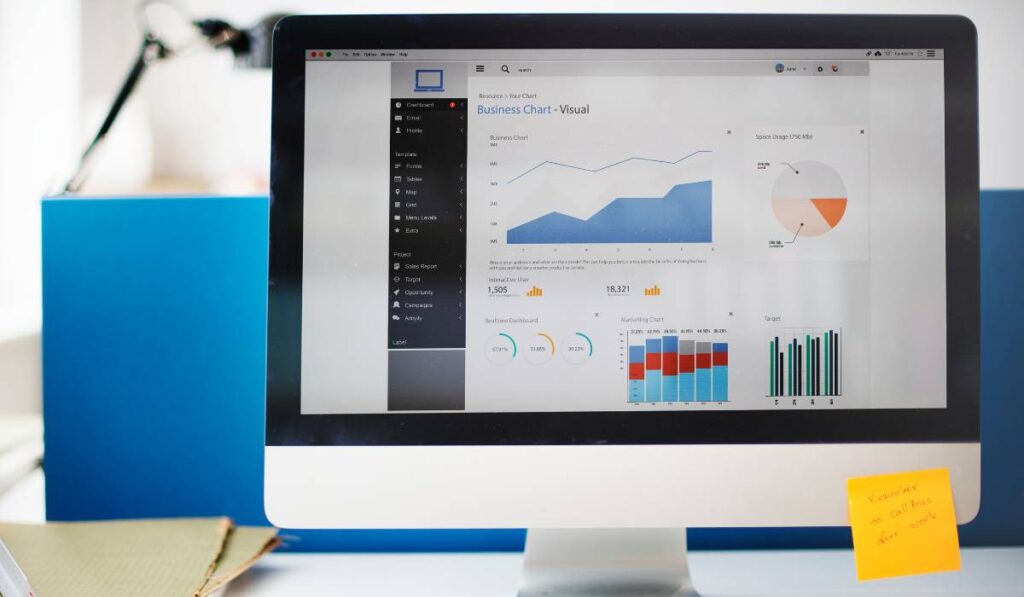In today’s digital age, social media has become an integral part of marketing strategies for businesses of all sizes. It provides a platform for companies to connect with their target audience, build brand awareness, and drive engagement. However, to effectively leverage social media for marketing purposes, it is crucial to track and analyze key metrics that provide insights into the success and impact of your social media campaigns. In this article, we will explore the key social media metrics every marketer should track to optimize their marketing efforts.
Reach and Impressions
Reach
Reach refers to the total number of unique users who have viewed your social media content within a specific time period. It is an essential metric to understand the potential audience size your content is reaching. Tracking reach allows marketers to evaluate the effectiveness of their content distribution strategy and identify the reach of their brand messaging.
Impressions
Conversely, impressions represent the total number of times your content has been displayed on social media feeds, regardless of whether it was clicked or not. It provides valuable insights into how often your content appears in front of users, indicating your brand’s visibility. Tracking impressions can help marketers assess the overall exposure and awareness generated by their social media content.

See How my agency can grow your business
- Web Design - Get a website that best describes your business.
- SEO - Outrank competitors and win search engine first pages.
- PPC - Ensure the right action from the right audience.
- SMM - Create more impressions. Feel more connected.

See How my agency can grow your business
- Web Design - Get a website that best describes your business.
- SEO - Outrank competitors and win search engine first pages.
- PPC - Ensure the right action from the right audience.
- SMM - Create more impressions. Feel more connected.
Engagement Metrics
Likes, Comments, and Shares
Likes, comments, and shares are crucial engagement metrics that reflect your social media posts’ level of interaction and interest. Likes indicate the number of users who appreciated your content, while comments represent the conversations and discussions sparked by your posts. Shares indicate the number of users who found your content valuable enough to share it with their own network. Monitoring these metrics helps marketers gauge the effectiveness of their content in capturing audience attention and driving meaningful conversations.
Click-Through Rate (CTR)
Click-through rate measures the percentage of users who click on a link included in your social media post, leading them to your website or landing page. It indicates the effectiveness of your call-to-action and the level of interest generated by your content. Tracking CTR enables marketers to assess the performance of their social media campaigns in terms of driving traffic to their desired destination.
Conversion Rate
Conversion rate measures the percentage of users who take a desired action, such as making a purchase, filling out a form, or subscribing to a newsletter, after clicking on a link within your social media post. It helps marketers evaluate the effectiveness of their social media campaigns in driving valuable actions that contribute to their business goals. Tracking conversion rate provides insights into your social media efforts’ return on investment (ROI).
Audience Insights
Follower Growth Rate
Follower growth rate represents the rate at which your social media following is expanding over a specific period. It helps marketers understand the popularity and appeal of their brand on social media platforms. Tracking follower growth rate allows businesses to identify trends and patterns in audience acquisition and optimize their content strategy to attract and retain a loyal follower base.
Demographics
Understanding the demographics of your social media audience is essential for targeted marketing. Demographic insights provide information about the age, gender, location, and interests of your followers. By analyzing this data, marketers can tailor their content and messaging to resonate effectively with their target audience.
Sentiment Analysis
Sentiment analysis involves assessing the overall sentiment of your audience towards your brand or specific campaigns. It helps marketers gauge the perception and reception of their brand and make informed decisions regarding content creation and strategy. Sentiment analysis tools analyze social media conversations and classify them as positive, negative, or neutral, providing valuable insights into brand reputation.
Social Media Advertising Metrics
Cost per Click (CPC)
Cost per Click measures the average cost you pay for each click on your social media advertisements. It helps marketers understand the efficiency of their ad campaigns and compare the cost-effectiveness of different platforms or ad types. By tracking CPC, marketers can optimize their advertising budget and identify opportunities to reduce costs while maximizing results.
Conversion Tracking
Conversion tracking allows marketers to measure the number of users who complete a desired action, such as making a purchase or filling out a form, after clicking on a social media advertisement. It provides insights into the effectiveness of your ad in driving valuable conversions and helps optimize campaigns for better ROI. Marketers can attribute specific actions and revenue to their social media advertising efforts by setting up conversion tracking.
Ad Engagement Rate
Ad engagement rate represents the percentage of users interacting with your social media ads, such as clicking, liking, sharing, or commenting on them. It indicates the level of interest and engagement your ads generate among your target audience. Tracking ad engagement rates helps marketers assess the relevance and appeal of their ad content, enabling them to refine their strategies and create more compelling advertisements.
Social Media Sentiment and Brand Reputation
Brand Mentions
Brand mentions refer to instances where your brand or products are mentioned on social media platforms through direct tagging or conversations. Tracking brand mentions allows marketers to monitor their brand’s online presence, assess sentiment, and engage with users who mention their brand. Positive brand mentions can be amplified, while negative mentions can be addressed promptly to maintain a positive brand reputation.
Share of Voice
Share of Voice measures the visibility and prominence of your brand compared to competitors within a specific industry or niche on social media platforms. It provides insights into how much your brand is being talked about in relation to others. Monitoring the share of voice helps marketers evaluate their brand’s social media presence and identify opportunities to increase brand awareness and market share.
Customer Feedback and Reviews
Social media platforms serve as channels for customers to provide feedback and reviews about products or services. Monitoring customer feedback and reviews helps marketers gather valuable insights into customer satisfaction, identify areas for improvement, and address customer concerns. Marketers can enhance brand reputation, build customer loyalty, and drive positive word-of-mouth by actively engaging with customer feedback.

See How my agency can grow your business
- Web Design - Get a website that best describes your business.
- SEO - Outrank competitors and win search engine first pages.
- PPC - Ensure the right action from the right audience.
- SMM - Create more impressions. Feel more connected.

See How my agency can grow your business
- Web Design - Get a website that best describes your business.
- SEO - Outrank competitors and win search engine first pages.
- PPC - Ensure the right action from the right audience.
- SMM - Create more impressions. Feel more connected.
Social Media ROI and Analytics
Return on Investment (ROI)
Return on Investment (ROI) measures the profitability of your social media marketing efforts by evaluating the revenue generated compared to the costs incurred. It helps marketers understand the financial impact of their social media campaigns and make data-driven decisions regarding resource allocation and budgeting. Tracking ROI enables businesses to assess the effectiveness of their social media strategies and optimize their return on investment.
Social Media Analytics Tools
Social media analytics tools provide valuable insights into various metrics and performance indicators, allowing marketers to track and analyze their social media activities. These tools offer comprehensive data on reach, engagement, conversions, audience demographics, and more. By utilizing social media analytics tools, marketers can gain deeper insights into their campaigns, identify trends, and make informed decisions to optimize their social media marketing efforts.
Emerging Trends in Social Media Metrics
Video Views and Engagement
Video content has gained significant traction on social media platforms. Tracking video views and engagement metrics, such as completion rates, comments, and shares, helps marketers understand the effectiveness of their video content in capturing audience attention and driving engagement. With the rise of platforms like TikTok and Instagram Reels, video metrics have become increasingly important in measuring the impact of social media campaigns.
Influencer Metrics
Influencer marketing has become a prominent strategy for brands to reach their target audience through social media. Tracking influencer metrics, such as follower count, engagement rates, and audience demographics, allows marketers to assess the performance and effectiveness of influencer collaborations. By analyzing these metrics, marketers can identify the most suitable influencers for their brand and measure the impact of influencer partnerships on key marketing objectives.
Conclusion
Tracking key social media metrics is crucial for marketers to assess the performance and impact of their social media campaigns. Marketers can optimize their strategies, improve brand visibility, and drive meaningful results by analyzing reach, impressions, engagement metrics, audience insights, and sentiment analysis. Stay proactive in monitoring these metrics and adapt your approach based on the insights gained to stay ahead in the competitive social media landscape.
Get Access Now to VentCube: Supercharge Your Social Media Marketing!
Are you ready to take your social media marketing efforts to the next level? Look no further than VentCube – the ultimate tool to supercharge your social media campaigns. With VentCube, you can track all the key social media metrics mentioned in this article and gain valuable insights into the performance and impact of your marketing strategies.



